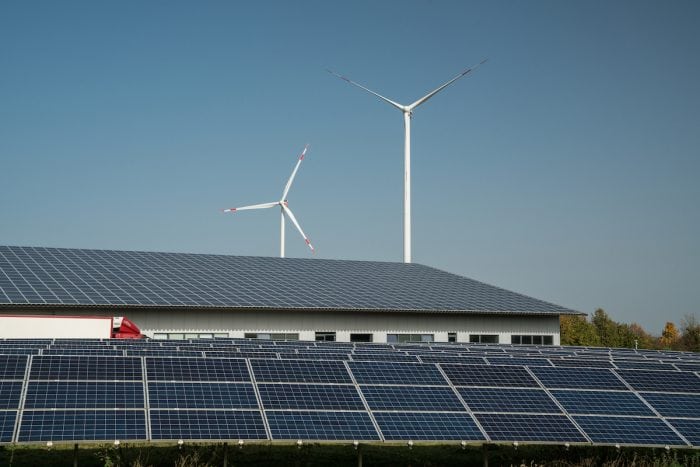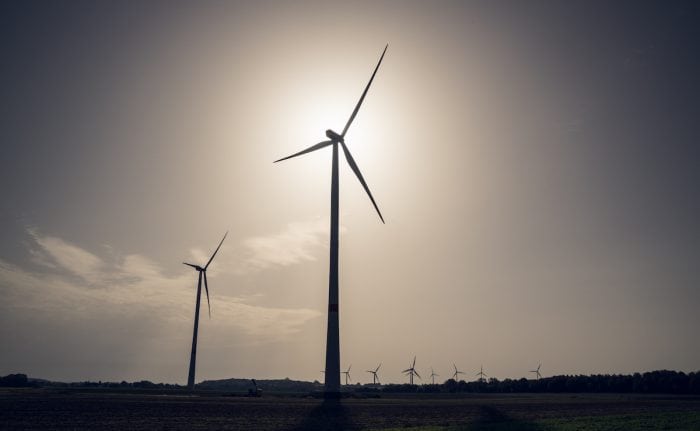
Climate change and its effects on our ecosystems and our economies is one of the main current and future challenges. As most greenhouse gases are emitted by the energy generation sector (IPCC, 2014), there is a special need to develop renewable energies which emit fewer greenhouse gases over their lifetime than fossil energy fuels.
Developing renewable energies for electricity and heat generation leads to structural changes in the energy system which has technical (for example, decentralization of the energy system from large-scale plants to smaller decentralized energy generation units) as well as economic impacts. Whereas renewable energy technology industries, such as the wind power industry, benefit from positive impulses, decreasing investments in traditional energy industries, such as the lignite industry, takes place (BMVI, 2017).
Many analyses and publications evaluate the economic impact of shifting to a renewable energy system on a national scale (e.g. Hillebrand et al., 2006 and Lehr et al., 2012 for Germany, Wei et al., 2010, for the US, or de Arce et al., 2012 for Morocco) and the impacts on a smaller scale (for example, on regions or local communities) are most often not considered. However, the measurable and visible effects may even be larger on a lower spatial scale, as they directly affect the regional or local economy.

Credit: Author
Moreover, in many countries with a decentralized political system, decision-making power on renewable energy developments lays rather on a local and regional scale instead of a national. Therefore, municipalities or regions possess the power to support or to hinder renewable energy developments in their spheres of influence. Jacobsson and Bergek (2004) show this with the example of the Dutch wind power industry, where developments were avoided by decision makers, leading to imminent problems for the wind power industry.
Evaluating the economic benefits, such as employment, profits of enterprises, earnings of employees, or local taxes, of renewable energies illustrates their value for the local and regional economy and is, therefore, a beneficial tool for decision-makers to understand the benefits for their regions.

Credit: Author
For an analysis of the regional economic impacts of renewable energy developments, one should ideally consider the following points. To make results comparable, one should present illustrative results and show the economic benefits in employment, €/MW installed, or in € per MW energy generated per technology. In that case, it is important to refer to the period when these effects occur. Employment effects, therefore, should be illustrated in full-time equivalents and person-years.
Ideally, these results are disaggregated in different stages of a technology’s lifecycle (i.e. manufacturing, installation, operation and maintenance, energy generation, and end-of-life activities such as uninstallation and recycling). This disaggregation is important because of the regional economy, which may only be able to fulfill specific tasks. Usually, manufacturing of a plant which is installed in a region is not manufactured there, but operation and maintenance, as well as energy generation, may be executed by regional companies.
Furthermore, a profound analysis of the region, which includes geographical characteristics (renewable energy sources generation potentials, population, regional economy), should be made. Afterward, choosing an assessment time (historic, current, or future effects) should be done. As a last step, the main effects, such as employment, or further economic effects (regional domestic product, profits of enterprises or value added) should be chosen. Based on that analysis, an assessment methodology should be considered. The most-used instruments are employment ratios, supply chain analyses, input-output models, and computable general equilibrium models, which all have their benefits and disadvantages based on the research question.

Credit: FiW
Studying the net effects of energy transitions by analyzing the chances of increasing investments in renewable energies, as well the negative effects for conventional energy generation industries allows for a comprehensive view on the regional energy transition, which should ideally be assessed as well, since decision makers are able to forecast how job losses in conventional energy generation industries may be compensated by jobs in renewable energy industries. This is especially important for regions, whose economies are based on conventional energy generation technologies.
Most studies in the field focus on relatively trivial economic effects (e.g. employment) of renewable energies and mostly do not consider other effects, such as changes in the regional economy, leading to improved export chances in industries with an increasing importance, innovation dynamics and spill-overs, as well as environmental economic effects of avoided greenhouse gases and air pollution which positively affects public health. The environmental economic effects should ideally be monetized in order to illustratively show up the positive effects of renewable energies to decision makers. Besides the methodological difficulties in assessing all these effects, they are clearly valuable and should be integrated into comprehensive analyses.
Conclusively, taking into account some of the aspects which have been presented, in future evaluations, will strengthen the significance and meaningfulness of such assessments, leading to a more substantial appreciation of the regional chances of renewable energies by politicians, the regional economy, and society and may be a support in developing renewable energies and, thus, combating climate change.

Credit: FiW
These findings are the results from a project of the FONA (Research for Sustainable Development) programme funded by the German Federal Ministry of Education and Research (BMBF) (FKZ 033L116G) and have been described in the article entitled Assessing the regional economic impacts of renewable energy sources – A literature review, recently published in the journal Renewable and Sustainable Energy Reviews. This work was conducted by Simon Jenniches from the Copernicus Institute at Utrecht University and the RISP at the University of Duisburg-Essen.
References:
- BMVI, editor. Räumlich differenzierte Flächenpotentiale für erneuerbare Energien in Deutschland; 2015. https://www.bbsr.bund.de/BBSR/DE/Home/bbsr_node.html BMVI/BMVIOnline/2015/DL_BMVI_Online_08_15.pdf?__blob%20=publicationFile&v=2〉 [accessed 29 December 2017].
- de Arce R, Mahía R, Medina E, Escribano G. A simulation of the economic impact of renewable energy development in Morocco. Energy Policy 2012;46:335–45.
- Hillebrand B, Buttermann HG, Behringer JM, Bleuel M. The expansion of renewable energies and employment effects in Germany. Energy Policy 2006;34:3484–94.
- IPCC, editor. Mitigation of Climate Change. Contribution of Working Group III to the Fifth Assessment Report of the Intergovernmental Panel on Climate Change. Cambridge University Press: Cambridge, United Kingdom and New York, NY, USA; 2014.
- Jacobsson S, Bergek A. Transforming the energy sector: the evolution of technological systems in renewable energy technology. Ind Corp Change 2004;13:815–49.
- Lehr U, Lutz C, Edler D. Green jobs? Economic impacts of renewable energy in Germany. Energy Policy 2012;47:358–64.
- Wei M, Patadia S, Kammen DM. Putting renewables and energy efficiency to work. How many jobs can the clean energy industry generate in the US? Energy Policy 2010;38:919–31.









